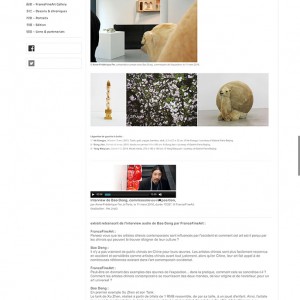ON THE EDGE OF THE UNKNOWN
In Stranger Shores, a collection of critical essays, Nobel prize winner J.M. Coetzee, expresses his duality dilemma: being both South African born and son of Western descendants at once. Being aware of the western literature legacy without ignoring its literal local anchorage. How to carry on the inherent transcendence of literature without considering its political function? The author faces this dilemma with disillusion and detachment.
The title underlines the duality of the author: the multiple connotations of the word “Stranger” qualifying both what is “out of the ordinary”, “unfamiliar” and what is “foreign”, “unknown”, reflects the author’s double reference to both his studies and his own local interpretation.
J.M. Coetzee’s identity dilemma can equally exists at all levels for Chinese contemporary artists. Even if Chinese contemporary art has been strongly influenced by overseas trends, its one-sided and outdated cultural images cannot overcome a reading based on Eastern symbols and with a political interpretation.
This is why it has always been considered as different.
On the other hand, because of the influence that Western culture has had on Chinese contemporary art from the very beginning, it has always been reflected-on and broadcast inside a closed circle, without developing any sense of belonging within a larger part of Chinese Society.
Chinese Contemporary art was treated as a « stranger » by the West but also as « something coming from the outside » by the native’s point of view.
In this context, many Chinese artists strive to link their work to the local experience while avoiding territoriality that would reduce their works to a kind of multiculturalism sample. Therefore, they avoid traditional eastern symbols and also reject the rigid political characteristics. Regarding the approach of the western public, the work of Chinese artists is perceived as something apart beyond the frame of reference of Multiculturalism. This is precisely where the power of Chinese culture and contemporary art lies.
Bao Dong, January 2016
